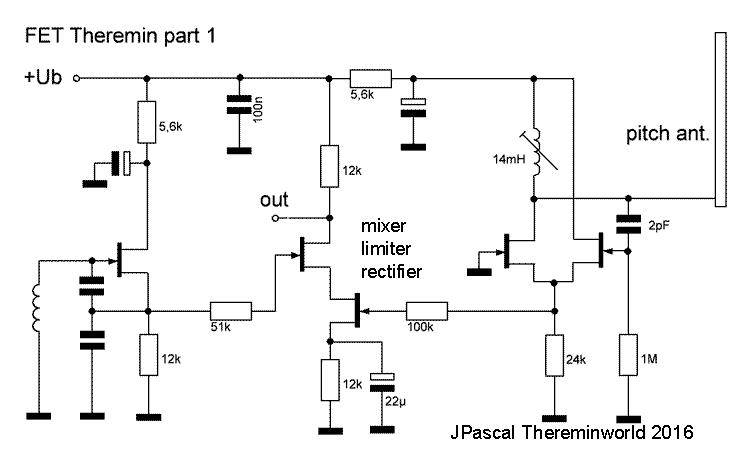Introduction: The forum thread on Theremin World titled "basic experiments" covers various topics related to the theremin, including:
Pitch Linearity and sound effects: Discussions on achieving pitch linearity and timbres similar to the old RCA theremin using minimal components like BJT and FET transistors, air core coils, certain antenna designs. Users share their experiments and results, including videos demonstrating pitch linearity with a piano keyboard or about the genesis of a Clara Rockmore RCA sound.
Circuit Diagrams: Users share their circuit designs for pitch oscillators and mixers, discuss how to avoid ugly hum modulation and how to extend the bass range.
Volume Control: The thread also touches on the limitations of volume control in conventional theremins, particularly the dynamics of volume changes based on hand movement speed. A new method of volume acceleration is demonstrated that enables attack and piccicato effects at a greater distance from the antenna.
Capacitance Calculations: There are discussions about the physical formulas for calculating capacitance between hand and rods or plates, and the discrepancies between theoretical calculations and experimental results.
User Experiments: Forum members share their personal experiments and findings, providing insights into their approaches and the results they have achieved
These topics provide a comprehensive overview of the technical aspects and experimental approaches to understanding and improving the theremin.
---------------------
Start of the thread
---------------------
Hello, I am from germany and interested in the basics of Theremin. Especially the sound of the old RCA Theremin I try to simulate with minimal parts of transistors. A 14 mH coil and JFets are used. Knowing various very good circuit examples I follow my own way step by step. The pitch linearity of the RCA Theremin was about three octaves within half a meter. This distance corresponds exactly to the piano keybord. Some initial experiments you can watch on my YT channel, e.g. "Theremin pitch linearity demonstrated with old piano".
https://www.youtube.com/channel/UCMZ4k977H6gcKJNw4yXkb_A
Hope you enjoy it and look forward for critical feedback. JPascal


